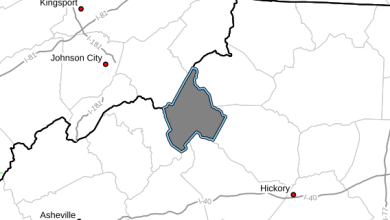Last Updated on October 2, 2022 6:04 pm
The arrival of the fall season not only means dropping temperatures and leaves, but also an increase in the chances of a collision with a deer across North Carolina. Between 2011 and 2013, nearly half of the more than 61,000 animal-related crashes took place in October through December. About 90 percent of those involved deer.
A N.C. Department of Transportation study shows that in 2013, there were 20,308 animal-related crashes statewide, a slight increase over the 2012 figure, but still well below the numbers reported in 2010 and 2011.
Over the past three years in North Carolina, animal-related crashes claimed 18 lives, injured more than 3,400 drivers and passengers, and caused more than $149 million in damages.
“Drivers need to be careful on the roads all the time, but even more so over the next few months,” said NCDOT Director of Mobility and Safety Kevin Lacy. “Increased deer activity and decreasing daylight hours mean vigilance by motorists needs to increase for their own safety and the safety of others.”
For 2013 Watauga County ranked 70th with a total of 89 animal related crashes, the most dating back to 2006. Ashe County ranked 83rd with 47 crashes, down significantly from the highest mark of 86 in 2011. Avery County ranked 90th, out of the 100 counties in the state, with 35 crashes.
For the 11th year in a row, Wake County led all counties in the number of animal-related crashes with 1,135, a slight increase over 2012 figures. That is primarily due to the combination of decreasing amounts of wooded area in the county and the increasing number of drivers and road mile usage.
Guilford County had more than 500 fewer animal-related crashes (620) and was the runner-up for a second year in a row. Duplin and Pitt counties tied for third with 539 animal-related crashes, followed by Randolph (499) and Johnston (492) counties. Rounding out the top 10 were Columbus, Rockingham, Mecklenburg and Pender counties.
Counties in the far western section of the state, where there are considerably fewer drivers and road mileage, once again reported the lowest number of crashes in 2013. Swain County had the fewest number of animal-related crashes with 5, falling just below Graham (9) and Jackson (11) counties.
Deer are on the roadways more during the fall into winter months due to the hunting and mating seasons. They also travel more at dawn and as it grows dark in the evenings, with the largest number of crashes coming between 5 and 8 a.m., and 6 and 10 p.m. In addition to more deer moving about and crossing roads at those times, decreased driver visibility makes it more difficult to see animals on or near roadways.
NCDOT offers the following suggestions for motorists to avoid being in a deer-vehicle crash:
Slow down in posted deer crossing areas and heavily wooded areas, especially during the late afternoon and evening;
Always wear your seat belt. Most people injured in deer-vehicle crashes were not wearing their seat belt;
Statistics indicate most deer-vehicle crashes occur in areas where deer are more likely to travel through, such as near bridges or overpasses, railroad tracks, streams and ditches;
Drive with high beams on when possible, and watch for eyes reflecting in the headlights;
Remember that deer often travel in groups, so do not assume that if a deer crosses the road, there won’t be others following;
Slow down and blow your horn with one long blast to frighten the deer away;
Increase the distance between your vehicle and other cars, especially at night. If the car ahead of you hits a deer, you may also become involved in the crash;
Do not swerve to avoid a collision with deer. This could cause you to lose control of your vehicle, flipping it over, veering it into oncoming traffic or overcorrecting and running off the road, causing a more serious crash;
Do not rely on devices such as deer whistles, deer fences or reflectors to deter deer as these devices have not been proven to reduce deer-vehicle crashes;
If your vehicle strikes a deer, do not touch the animal. A frightened and wounded deer can hurt you or further injure itself. The best procedure is to get your car off the road if possible, and call 911.
Data from NCDOT. Click to open in a new window.
























